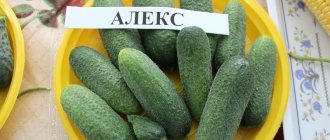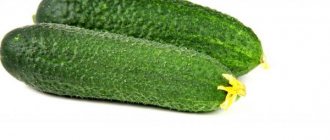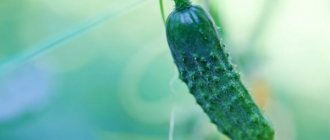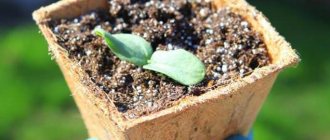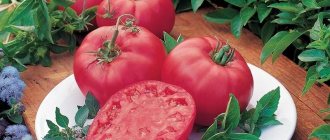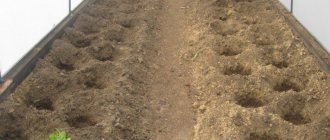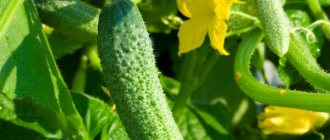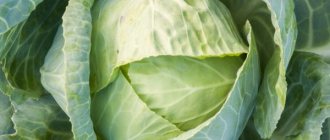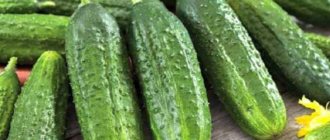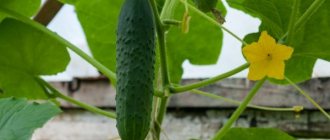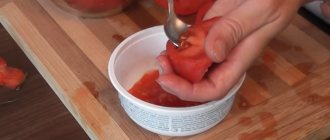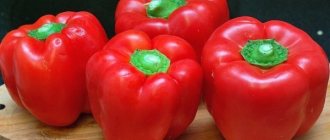The early Altai cucumber is named so for a reason: after 37 days the harvest begins. The variety is intended for planting in the middle zone in greenhouse conditions and in open beds for the southern regions. Valuable advantages are tolerance to temperature changes, excellent productivity and marketability.
| Landing location | Ripening time | Mode of application | Fruit length | Group | Fruit smoothness | Pollination method |
| Universal | Early ripening (35-45 days) | Salad | Short (gherkins) - less than 10 cm | Variety | Slightly lumpy | Bee pollinated |
Description and characteristics of the variety
Early Altai forms short vines of 0.6-0.8 m each. The bushes are moderately spreading. Branching is average. Description of the greenies:
- length within 6-9 cm;
- tubercles are small and few in number;
- the shape resembles an ellipse;
- pale green color;
- good crunchiness;
- classic taste without bitterness.
The main use of greens is salads and assorted dishes.
Description of cucumbers Altai
The developers of the hybrid variety tried to create a variety with strong immunity, which makes it possible to grow cucumbers not only in small areas, but also in industrial quantities.
In terms of ripening time, Altai cucumbers belong to the ultra-early varieties, since the fruits are harvested 32-40 days after the sprouts appear.
Altai cucumbers are distinguished by their resistance to transportability, as well as the marketable appearance of the fruit. In addition, the variety is popular due to its taste characteristics and versatility in use: cucumbers can be used not only for preparing salads. They are also suitable for pickling or canning.
The Altai cucumber variety is also famous for its high shelf life: if all storage rules are followed, the fruits do not lose their appearance and taste characteristics.
Characteristics of the variety
- Altai cucumber bushes are medium-branched and low - their length reaches 1.5 m;
- Description of the root system of the variety: the roots of the plant are taproots, the central root is located deep in the ground, and from it there are small lateral roots with small hairs;
- The stem of the plant is standard (up to 120 cm), round in shape and covered with small fibers;
- The leaves of cucumber bushes are large (up to 14 cm), pentagonal in shape with a rough surface and have an emerald color, which changes to brown during drought;
- Description of the flowering of the Altai cucumber variety: the flowers of the variety grow evenly, both male and female, and have a bright yellow color;
- Altai fruits are cylindrical in shape and reach a length of up to 13 cm;
- The peel of cucumbers is dark green with small pimples and dark green spines that fall off when the fruit ripens;
- Description of cucumber pulp: juicy, sweet, not bitter and has a small amount of seeds.
New generation hybrids
It is hybrid varieties that can be safely planted in low temperatures and successfully grown indoors. Already at the f1 genetic level, the cucumber is resistant to many diseases and unstable natural factors.
Hybrids, as a rule, have earlier ripening periods and high yields, qualities that are most relevant in the short summer conditions of the west and east of Siberia. In addition, when growing hybrids, you do not have to worry about attracting insects to pollinate the ovaries. Most hybrids are parthenocapy and do not require pollination to form fruit. The best varieties for any type of greenhouse are hybrids.
Unlike varietal plants, hybrid plants exhibit most important economic and commercial characteristics: productivity, uniformity of varietal characteristics in all plants, short growing season. Particularly relevant are resistance to changes in humidity, temperature, and resistance to pathogens of viral and fungal diseases. Therefore, hybrids are ideal for growing in greenhouses.
Miranda F1
The universal early-ripening hybrid is characterized by cold resistance and resistance to major cucumber diseases. Can be cultivated outdoors and in protected ground. Does not require pollination. The plant is tall, well leafy.
Zelentsy are 11-12 cm long, weighing up to 120 g. Productivity is good. Up to 6.5 kg of cucumbers per 1 sq. m. The fruits are oblong green in color, with light specks and white stripes up to the middle of the fruit, with white thorns. Miranda cucumbers are tasty and juicy. Suitable for pickling and pickling.
Agricultural technology is no different from the process of growing most varieties. When the soil warms up to 15 degrees, the seedlings are planted in a permanent place. Most often this is the last ten days of May. Plant no more than 3-4 plants per 1 square. m. A garter or attachment to trellises is required.
Siberian bouquet F1
Early ripening, high-yielding hybrid, does not require pollination and is adapted to the low temperatures of Siberia. It is distinguished by friendly yield of fruits. Can be grown in any type of greenhouse and in open ground, resistant to common diseases. The plant is medium-climbing with unusual ovaries of 3-4 cucumbers, which look like a bouquet.
Cucumbers are up to 10 cm long, elongated in shape, and weighing up to 45-50 g. The hybrid has excellent marketability. Its most significant characteristic is the ability to produce a yield of up to 30 kg per square meter. m. The fruits are uniform in size and shape, have dense pulp, small seeds, do not taste bitter, and are ideal for pickling.
Cucumber Siberian bouquet f1 is quite demanding in terms of care. To obtain the maximum yield, you should follow the watering and fertilizing regimes, and remove ripe greens in a timely manner.
Restina F1
Many seed farms and agricultural companies are developing varieties and hybrids for areas with unfavorable weather. As a result of the work of agricultural breeders, a super early, high-yielding, bee-pollinated hybrid, Restina f1, appeared on the seed market.
The plant has genetic resistance to the main fungal, viral and bacterial diseases of cucumbers. From germination to harvest, only 39-40 days pass. The plant has bouquet ovaries, so it looks unusual. Cucumbers are collected in bunches of 3-5 pieces. They can be grown not only in a greenhouse or in a garden plot.
The variety is planted in boxes or pots on balconies and loggias. The plant looks very impressive. The cucumbers are small, gherkin-type, 5-6 cm long. The surface of the cucumbers is finely tuberous, green with light stripes. The pulp is dense, crispy, suitable for canning and preparing summer and winter salads.
The plant is heat-loving; for areas with cold climates, seedling cultivation is recommended. The crop is planted in a permanent location when the danger of frost has passed.
Important! When growing bee-pollinated varieties and hybrids with a female flower type, it is necessary to plant up to 10-15% of the plants with pollinating varieties that produce male flowers. They are planted in each row every 7-8 plants of the main variety.
Pros and cons of the variety
Like other crop varieties, Altai cucumbers have not only a number of advantages, but also disadvantages that were highlighted thanks to the experience of growing the plant. Let's consider a description of the pros and cons of the variety.
pros
- High level of productivity of the variety;
- Strong immunity to many cultural diseases;
- Resistance of cucumbers to frost;
- Excellent presentation and keeping quality of fruits;
- Resistance to transportability;
- The versatility of using cucumbers;
- Excellent taste characteristics of the cucumber variety;
- The fruits reach approximately the same size.
Minuses
- Low level of germination of Altai cucumbers during sowing of seeds in the soil;
- Not long-term fruiting of cucumbers.
Altai early 166
Bred at the West Siberian vegetable and potato breeding experimental station by the method of individual and mass selection from a spontaneous hybrid between the varieties Muromsky 36 and Nerosimy 40. Authors: Veselovskaya M. A., Zhukov V. Yu., Tulupov Yu. K. and Kurlyanchik M. V.
Zoned in Volgograd, Gorky, Irkutsk, Kemerovo, Kirov, Kostroma, Kurgan, Leningrad, Novgorod, Novosibirsk, Omsk, Perm, Ryazan, Sakhalin, Sverdlovsk, Smolensk, Tomsk, Tyumen, Chelyabinsk and Chita regions, in the Altai and Krasnoyarsk territories, in Mari, Tatar, Tueinsk, Udmurt and Chuvash Autonomous Soviet Socialist Republics of the Russian Federation; in the North Kazakhstan region of the Kazakh SSR; in the Estonian SSR.
The variety is short-climbing, early ripening, lettuce, 37-58 days pass from germination to the first harvest of fruits, 44-61 days from the first to the last harvest. Fruiting is friendly and early.
Productivity 250-390 c/ha.
The greenery is ellipsoidal in shape, rounded-triangular, finely tuberculate, 6-9 cm long, 4-5 cm in diameter and weighing 70-80 g. The color is light green with rare small spots and longitudinal light stripes.
The testis is white, without a mesh.
The fruits do not turn yellow for a long time, have average taste (2.5-3.3 points) and are often deformed. The number of ugly fruits reaches 11-14%.
The vines are short (50-80 cm), heavily leafy.
The leaves are small, light green. The ovary is ellipsoidal, short. The spines are dense, simple or mixed, white. Most of the ovaries are formed on the main vine.
It tolerates short-term temperature drops down to 8-10° C. The variety is resistant to bacteriosis and fungal diseases.
Transportability is good, the fruits are suitable for transportation over long distances.
The fruits are used mainly fresh.
Suitable for growing under small-sized film shelters.
Landing Features
Since Altai cucumbers are able to grow in cold regions, the sprouts may be damaged during spring frosts. Therefore, it is recommended to grow the variety in seedlings.
Landing dates
It is necessary to plant cucumber seeds for seedlings in the second half of April, so that after a month the formed sprouts can be transplanted into open soil.
Site preparation
To grow Altai cucumbers, you need to choose a well-lit and sunny place, which is also protected from drafts.
It is recommended to prepare the site in the autumn, when the previous harvest is being harvested. The soil must be dug up and fed with minerals that contain humus. As a rule, there are about 10 kg of manure or bird droppings per 1 m2. Before planting cucumbers, it is also recommended to dig up the soil and remove all weeds.
Planting seeds
Before planting, cucumber seed must be placed in a damp cloth and refrigerated for 24 hours. Afterwards, the seeds must be treated with a manganese solution: soak the seeds in manganese for 30 minutes. Next, the seeds of the Altai variety are placed on gauze and given time to dry. Afterwards, the seeds are planted in peat pots up to 3 cm deep.
Planting seedlings
It is recommended to plant Altai cucumber seedlings in open soil when the sprouts have reached a height of 20 cm and about 5 leaves have formed on them.
After transplantation, it is recommended to cover the plant with a thick film and thoroughly water it with water at room temperature.
Planting scheme
It is recommended to plant Altai cucumbers at a distance of up to 30 cm between bushes and up to 60 cm between rows. The depth of the hole where the cucumbers will be planted should reach 15 cm.
A hardy variety for different weather - early Altai cucumber: full description
The early Altai cucumber is named so for a reason: after 37 days the harvest begins. The variety is intended for planting in the middle zone in greenhouse conditions and in open beds for the southern regions. Valuable advantages are tolerance to temperature changes, excellent productivity and marketability.
| Landing location | Ripening time | Mode of application | Fruit length | Group | Fruit smoothness | Pollination method |
| Universal | Early ripening (35-45 days) | Salad | Short (gherkins) - less than 10 cm | Variety | Slightly lumpy | Bee pollinated |
Description and characteristics of the variety
Early Altai forms short vines of 0.6-0.8 m each. The bushes are moderately spreading. Branching is average. Description of the greenies:
- length within 6-9 cm;
- tubercles are small and few in number;
- the shape resembles an ellipse;
- pale green color;
- good crunchiness;
- classic taste without bitterness.
Care
Altai cucumbers are demanding in care, so they need systematic watering, staking and formation of bushes, as well as feeding and hilling the plant. Below is a description of each type of work.
Watering
It is necessary to water the bushes of cucumbers of the Altai variety when the surface of the soil begins to become crusty. It is recommended to water with warm water (several degrees higher than the soil temperature).
Altai cucumbers need to be watered once every 7 days until the bushes bloom and 1-2 times every 3 days when the fruits of the variety ripen.
Watering work is carried out, as a rule, in the early morning or evening. Altai cucumber bushes need to be watered at the root. It is also recommended to carry out sprinkling, that is, spraying the leaves with water. Spraying is usually carried out in the morning.
Garter and bush formation
Before planting cucumbers in the place where the Altai variety bushes will grow, it is necessary to place vertical or horizontal supports. In order for the shoots of the bushes to weave, it is necessary to tie them up, thus helping the plant’s tendrils to catch on the rope.
To speed up the process of ripening of Altai cucumber fruits, gardeners recommend carefully cutting off excess shoots from the axils of the 5 lower leaves, and the ovaries of the 3 lower leaves are also cut off.
Top dressing
Altai cucumbers need to be fed once every 10 days. Complex substances are used for feeding, and nitrogen is added at the time of flowering.
It is also recommended to feed the bushes of the Altai variety with urea, and for spraying they use a solution of urea.
Hilling
Cucumbers are a crop that does not require hilling, since their root system is located quite close to the earth's surface, therefore, as a result of hilling, the roots of the plant can be damaged, which contributes to their death.
However, experienced gardeners recommend loosening the soil where cucumbers grow using a fork. This method will not only allow oxygen to pass through to the plant’s root system, but also get rid of weeds.
Diseases and parasites
Despite the fact that the breeders of Altai cucumbers took care of the strong immunity of the variety, the plant is still susceptible to diseases such as bacteriosis, transporosis, and is also subject to invasion by the small pest whitefly.
Bacteriosis
Bacteriosis is a fungal infection that causes damage to plant foliage. With bacteriosis, brown spots form on the leaves. At high humidity levels, the stains take on an oily consistency. Bacteriosis also contributes to the appearance of small ulcers with cloudy liquid on cucumbers.
To combat bacteriosis, the chemical preparations “Kuproskat” and “Champion” are used.
Downy mildew
Downy mildew, or downy mildew, is a fungal disease of cucumbers that causes the formation of oily spots with a brown tint on the leaves of the plant. With high humidity, a gray-violet coating forms on the lower part of the leaves. If the disease becomes severe, the plant dies.
To combat peronosporosis, it is recommended to use biological fungicides, as well as chemical preparations “Gamair”, “Fitosporin M” and “Trichoderma Veride 471”.
Whitefly
Whitefly is a small pest that appears in greenhouses and greenhouses. In appearance, whiteflies resemble moths. The pest can damage not only the fruits of the plant, but also damage neighboring crops.
To combat whiteflies, it is recommended to use the chemical solution “Confidor Extra”.
Harvesting and storage
Unlike the Arctic variety, Altai cucumbers do not bear fruit for a long time, so it is recommended to pick cucumbers immediately after they ripen. Such actions contribute to the formation of new ovaries on cucumbers, resulting in an increase in fruit yield.
It is recommended to store Altai cucumbers in a room whose temperature does not exceed 4 degrees Celsius. As a rule, a basement or cellar is used to store fruits.
To prevent the fruits from rotting, it is recommended to lay them out in several layers in a box, which will allow the required amount of oxygen to reach the cucumbers.
If the fruits of the variety will be used in the near future, they should be placed in the refrigerator. If one of the cucumbers begins to rot, it must be removed immediately so that the remaining cucumbers do not rot.
